From the November 2022 issue of Apollo. Preview and subscribe here.
Jade was more valuable in ancient China than gold or silver – so this Song-dynasty cup in the Walters Art Museum, Baltimore, was likely an important ritual object. Curator Dany Chan explains its artful craftsmanship and mythological significance.
This libation cup, which stands at just 12.7cm tall, would have stood as part of an altar. It was designed to hold water, which would have been poured out as part of a ritual. There are multiple reasons why we think it would have been owned and used by someone from the upper class, possibly royalty or nobility. First, the material certainly suggests this. ‘Jade’ can refer to nephrite or jadeite – in this case, it is nephrite. Jade is very important in Chinese culture, where it was considered more valuable, in every way, than gold or silver. It was worn and owned by kings and nobles and has always been associated with royalty or nobility. It was also believed to have spiritual transcendence, and even to prevent a deceased body from decaying.
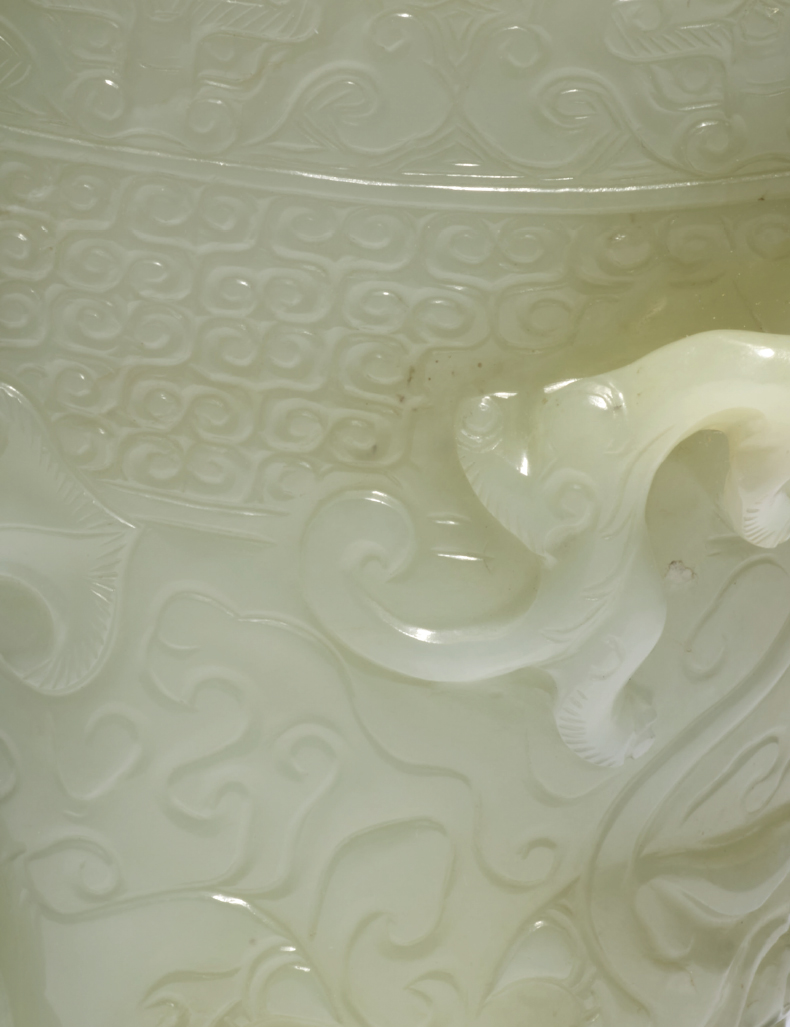
Cup with dragon handles (12th–14th century) China. Walters Art Museum, Baltimore
Second, the craftsmanship and detailing also suggest an elite owner. The artisan responsible for the carving has taken advantage of naturally occurring variations in the colouring of this piece. For example, the head of the dragon-like creature peeking up from the cup’s lip was shaped to exploit a darker coloration in the stone. The body of the creature to its left is primarily of the darker colour, making it stand out in the overall design. We find this use of natural variations in the best jade works. It indicates that the artisan has taken the natural form of the stone into consideration.
Technically, it’s very difficult to date jade. This cup is dated around the 12th–14th century, the time of the late Song dynasty (960–1279), largely on account of the design and motifs that we see around the surface of the cup. For those who are well-versed in the Song dynasty, it is often regarded as the ‘Golden Age’ of proto-archaeology, and there was a very strong courtly interest in archaism, in antiquarianism. It was a culture that revered and frequently referred to the past. Collectors and connoisseurs collected ancient jades and bronzes, and they used those ancient pieces to create new interpretations. This jade cup would have been one of those new interpretations of something more ancient.
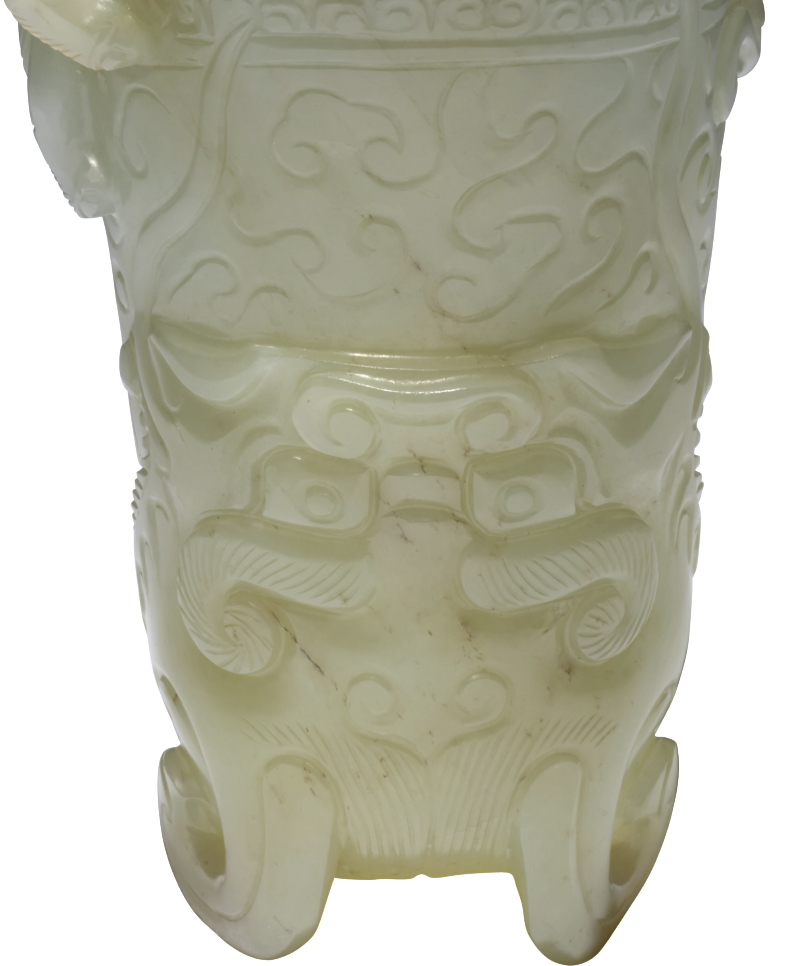
Cup with dragon handles (12th–14th century) China. Walters Art Museum, Baltimore
The conical cup sits on a base that is shaped like a beast; like a mythical creature. It has a tail on one side, and then the face may be what is called a ‘monster mask’ or taotie motif. This decoration was first found in ancient jades and bronzes. It has this ambiguous form of perhaps a single creature’s face, or it can be read as two creatures staring at each other in profile. The symbolism or importance of this form remains ambiguous, but it is a motif that we see throughout works made during China’s Neolithic and Bronze Ages. On the sides of the cup are these dragon-like, feline creatures that curve up on to the lip.
Upon the surface of the conical cup you see three registers – three bands of decoration. We find such banded decoration in much earlier ritual bronzes, especially inlaid bronzes. I would imagine, based on such bronzes, that the middle register with the smaller curlicues is where the inlay would have been in bronzes. There is no suggestion that the jade was inlaid but it is mimicking that pattern.
Jade is not carved, it’s basically abraded. This is how the decoration would have been made. Working jade is a three-step process. First, you cut the overall shape. Then the decoration would have been abraded with various tools and sanded in water; whatever tool is used, you constantly feed water and sand as you shape the decoration. The final step is to polish the object. This is not a process that allows for much improvisation. The artisan would have had a vision of the finished piece from the outset. The best pieces are the ones where the artisan has looked at the different colorations of the piece and placed the design in the stone accordingly.
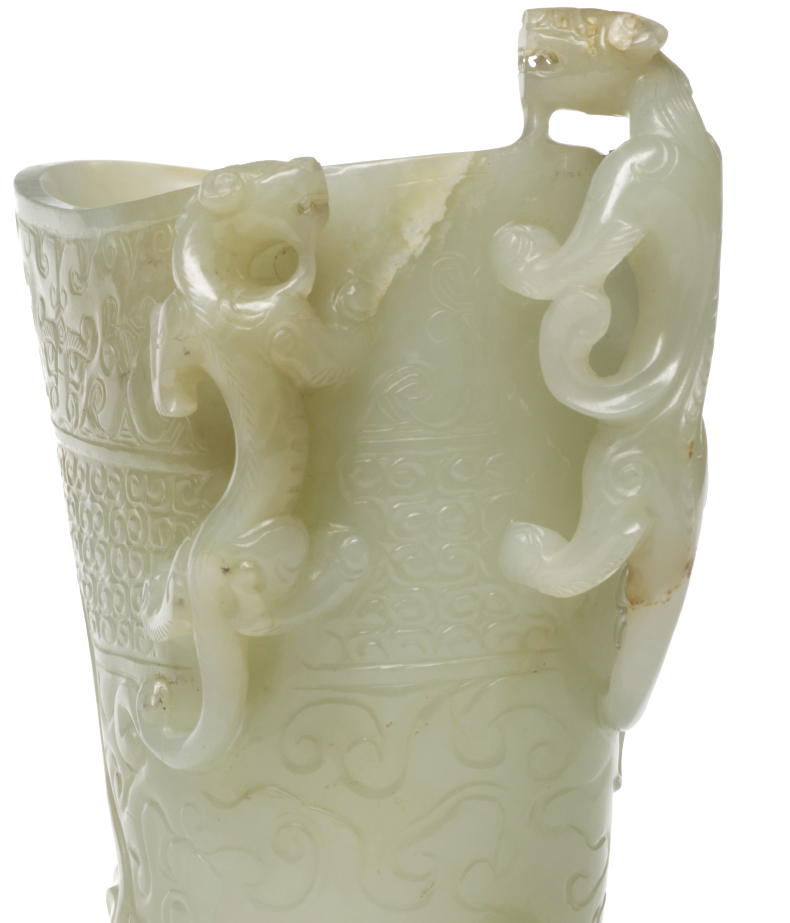
Cup with dragon handles (12th–14th century) China. Walters Art Museum, Baltimore
As early as the fourth century BC, we find images of dragons and dragon-like creatures in tombs of the upper classes and royalty. By this time, the dragon was believed to be an animal that could take a deceased soul into the afterlife. So the dragon has long been an important creature in Chinese culture, mythology and art, and for it to appear in a ritual object is not a surprise. One of the earliest indications we have of the importance of rituals is that in the Shang dynasty (c. 1600–1050 BC), the kings performed the rituals. The king was seen as the intermediary between the earth and the spirit world. In essence, kings and dragons are serving the same role, as beings that can traverse multiple realms. The Chinese character for ‘king’ (王) actually takes the form of that concept: it has a horizontal line for the heavens, the middle line for the earth, and the bottom line for the underworld or the spirit world, bisected by one vertical line that serves as the king, the intermediary.
This extraordinary work entered the collection of Henry Walters (1848–1931) when he bought it from the collection of John Ferguson (1866–1945), the man responsible for the acquisition of large parts of the Met’s collection of Chinese art. Ferguson was born in Ontario, and ordained as a Methodist minister in around 1886. Ferguson was sent to China as a Methodist missionary, where he was very active. He owned a Chinese-language newspaper when he was in Shanghai, and he served as the president of the university in Nanjing. Later on, he was involved with the Red Cross after the fall of the Qing Dynasty.
Ferguson started collecting when he was in Nanjing, and later became a dealer. His high-level connections and his knowledge from his immersion in Chinese culture at the time led him to acquire works for the Met, beginning in 1912. In 1915 he was appointed as an adviser to the new Chinese Republican Government and so, between 1915 and 1919, he travelled between China and the United States frequently.
The collection he had assembled was not the work of a dilettante. Having lived in China for a long time, and being part of the upper echelons of Chinese society, as well as through his work for the Met, he developed a very acute eye. The sale of his own collection, in 1916, coincided with a period when Henry Walters was actively looking to fill holes in his collection of Chinese art. Before this, Walters and his father, William T. Walters, primarily collected Chinese art from world fairs and international expositions. This is where they were first introduced to Chinese art and culture – they themselves never travelled to Asia.
Collecting in this way led to certain limitations; this cup represents a way of filling out the Walters’ collection and going beyond those limits. It was part of a period in which Henry Walters went on an annual buying spree, which led to bringing exquisite objects such as this libation cup to Baltimore.
As told to Edward Behrens.
Dany Chan is associate curator of Asian art at the Walters Art Museum, Baltimore.
From the November 2022 issue of Apollo. Preview and subscribe here.
Unlimited access from just $16 every 3 months
Subscribe to get unlimited and exclusive access to the top art stories, interviews and exhibition reviews.

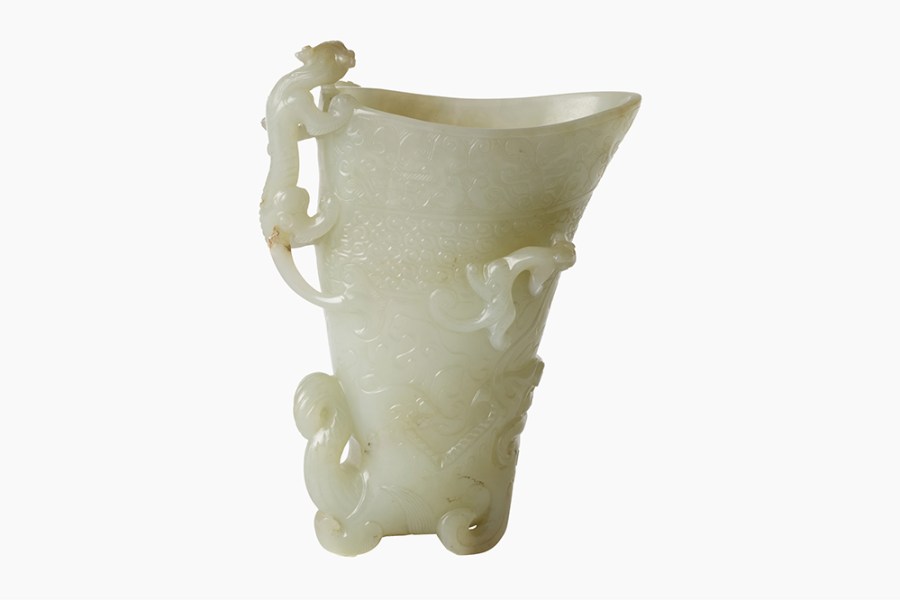
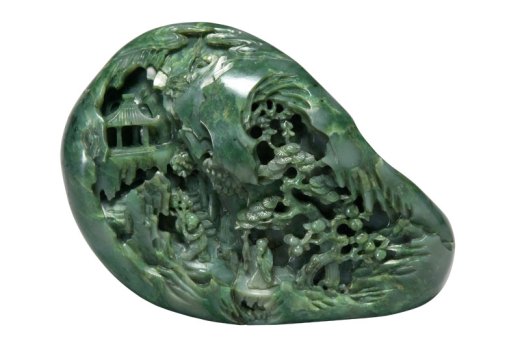

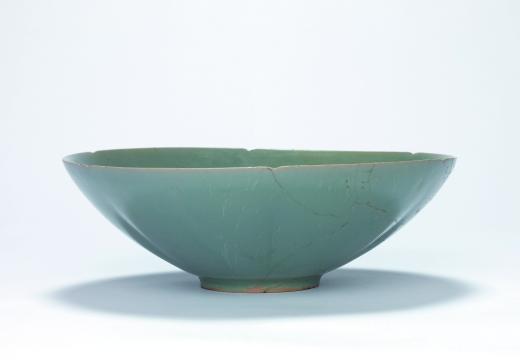









![Masterpiece [Re]discovery 2022. Photo: Ben Fisher Photography, courtesy of Masterpiece London](http://www.apollo-magazine.com/wp-content/uploads/2022/07/MPL2022_4263.jpg)
It’s time for the government of London to return to its rightful home